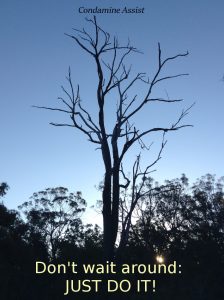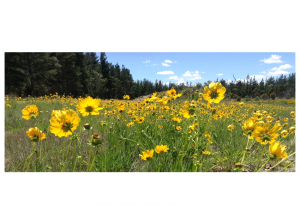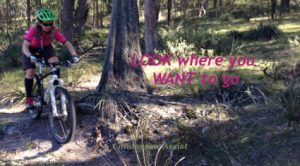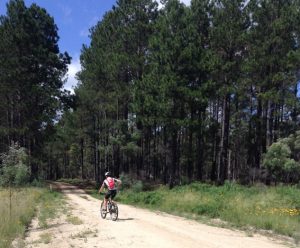We all know that exercise is generally a good thing we can do for ourselves. Exercise is clearly linked with reduced risk to many health problems, including mental health, and this is where my interest especially lies.

Social Changes
Over many years our society has gradually developed a more sedentary lifestyle. Our work, home, transport, leisure and play have all become less physically demanding as technology and industry have changed. While our parents, grandparents, great grandparents (and maybe even ourselves!) once spent hours physically kneading bread, beating butter and sugar together with a wooden spoon, digging holes and levelling ground by hand, sweeping the footpath with a broom, chasing each other in an after-school game of tiggy or helping to round up the chooks and cows, we are now much more reliant on our time and energy-saving devices to do the hard work for us or to entertain us.
Imagine living hundreds and thousands of years ago – people were even more active in these times, hunting and gathering food on a daily basis, building and re-building shelters at frequent intervals, tuned into their environments ready to fight, flight or freeze as the need arose. Yes! That thing we now call “anxiety” had a well-defined purpose for basic survival!
There have certainly been lots of changes to our way of living, our surroundings, our environment …… and yet our bodies basically work the same as they always have. In our sedentary lifestyles, we suffer for the lack of activity and exercise that our bodies and minds desperately need. We have discovered that many physical and mental health issues are exacerbated or even caused through lack of activity. Read more about exercise and depression here
http://www.blackdoginstitute.org.au/docs/ExerciseandDepression.pdf
What is the ‘right’ way to exercise?
When we commit to improving our health, whether it’s for our own sake or for the love of our family and community, we might feel pressured to exercise in ‘the right way’. There are lots of conflicting messages out there about what is the best form of exercise, the right time to exercise, and how much exercise we should be doing.
But let’s make one thing clear – doing something is better than nothing. We know the evidence says we need to be active, and throughout history human physical activity has taken all sorts of forms from basic survival activities (eg hunting, gathering, migrating, running / swimming / climbing from danger) to physically demanding farming and home management activities (horse-riding, fencing, digging, baking, washing) to a myriad of options we now have before us. We could, theoretically, choose any of the above activities, but now we also get to include walking / riding on specially constructed paths, swimming at the heated pool, gym programs, fitness classes, weight lifting, team sports, dance classes, adventure-based holidays, and the list goes on!
With so many options before us, we might seem spoiled for choice. There really is something for everyone whether you prefer to exercise in a group or alone, compete or engage in recreational pursuits, spend lots of money on the latest equipment / clothing / memberships or exercise at no or low cost. There are even more excuses for NOT exercising – more about that in a future blog!
So, how much exercise do we need?
The latest research was most recently packaged into the Australian Physical Activity and Sedentary Behaviour Guidelines in 2014 and is still considered current. Basically the evidence shows that we need to focus on being more active and less sedentary. This means for adults:
- doing any physical activity is better than none!
- limit the time you sit down
- break up periods of sitting down with standing / walking activities as often as possible
- aim for 2 ½ – 5 hours of moderate intensity activity a week or 1 ¼ – 2 ½ hours of vigorous intensity exercise a week
- be active on most or all days of the week
- do muscle strengthening activities at least 2 days a week
Exercise vs activity – what are my choices?
Note that the guidelines refer to ‘activity’ rather than ‘exercise’! Consider how you can incorporate a greater amount of physical activity into your day. Here are some ideas to get your imagination and motivation going:
- Go for a walk (footpath, park, beach, bush, in a large shopping centre)
- Create your own treasure hunt activity to be completed over a few days or weeks (eg list natural or man-made objects you can seek whilst on your walk, maybe take a photo of each item as you go)
- Join an adult learn-to-swim class or other skills-based program to build your confidence and increase your options for exercise
- Run around with your kids after school in the park or back yard (it’s a great way to tire them out so they sleep better at night – same for you!)
- Check if there are any walking groups in your neighbourhood or shopping centre
- Take a daily stroll through your garden, along your street or in the park and really start to notice the colours and seasonal changes
- Get up and stretch
- Walk the dog or cat
- Challenge yourself to complete a household or gardening task without the use of external power
- If you enjoy combining technology with your exercise, try mapping out a walking or cycling path using a GPS or other mapping device, then get out there and follow it! For an extra challenge, take up the latest craze of mapping out a specific pattern to follow eg a star shape.If you have any concerns about your health and how this effects your capacity to be active, it’s very important that you talk to your GP or other health provider. So, no excuses now! Get up, get out there, and do something! Because something is better than nothing 🙂




